Bouchon Bâtards
We made bâtards to eat with our fancy fondue, AKA the closest thing you can make to a baguette in your home oven (because of the size). To be a true baguette, it must be of a certain length, but it tastes exactly the same because it's the same master dough recipe. I apologize if I accidentally switch between the two terms as a result, but in my mind I keep saying we made baguette. Plus bâtard is such a weird word...
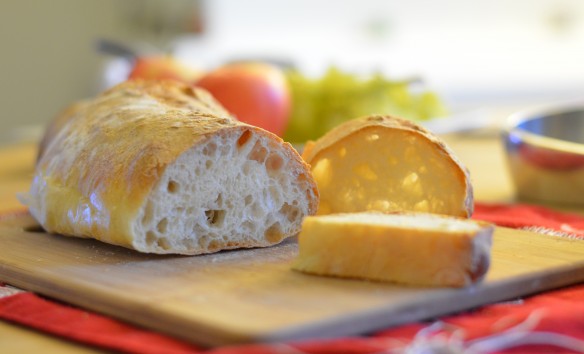
As stated before, Dustin and I have a glorious plan to bake our way through the Bouchon Bakery cookbook. We wanted to make homemade bread to dip into our fondue. However, we didn't leave enough time to develop a levain (starter), since they take 5-6 days. Instead we used another poolish-based recipe (there aren't as many of those, so we'll need to do a better job with planning and time management in the future) and ended up creating fantastic bâtards.
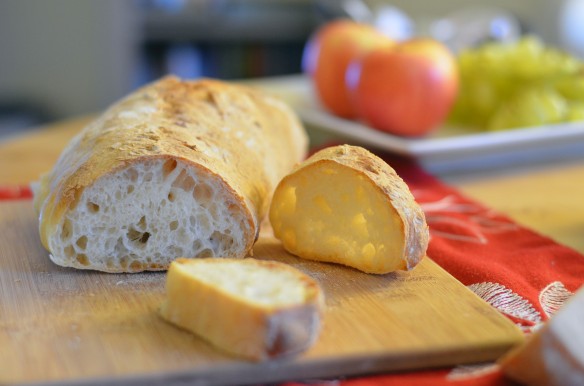
We had a few mishaps with the croissants (they didn't quite come out as perfect as we had hoped), but the bâtards were perfect (even without the chain, rocks, and water gun to create crazy steam as recommended by the book...I'm going to omit that step, but it you are interested in what that means, you should check out the Bouchon Bakery cookbook for yourself).
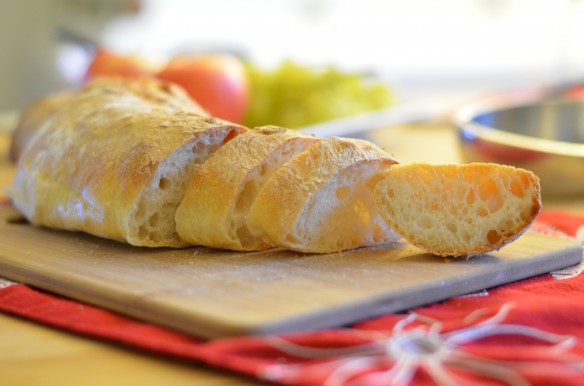
The bâtard dough appears to be a little more forgiving. We ended up with crispy, crunchy crust, and a soft and chewy interior with small gaps marbled throughout, just like the bread you'd be served before dinner at a nice restaurant.
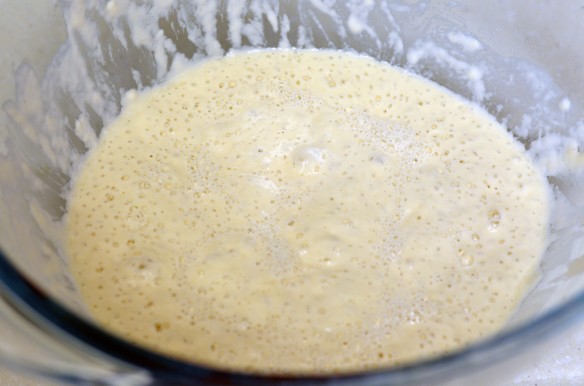
Once again we weighed all our ingredients on a kitchen scale (I've listed weights and traditional measurements), and this time we really tried to follow each step perfectly (although this recipe was easier in the sense that there was no rolling out the dough to specific sizes). Bread making is really so simple— not too many ingredients, just flour, water and a few pinches of salt and yeast. It only takes a little time and patience, but the end product was totally worth all of the trouble.
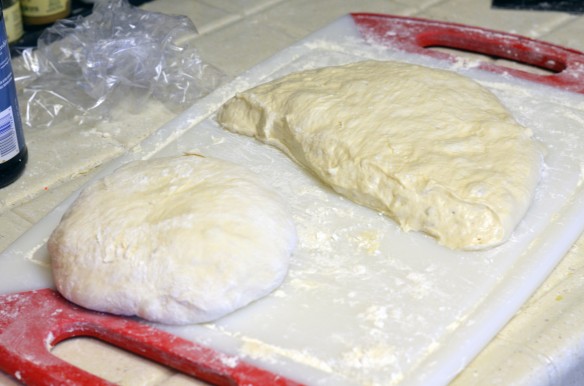
The apartment smelled absolutely amazing. Seriously the hardest part was allowing the bread to cool for long enough, so that it could finish cooking outside of the oven and have the right texture. I wasn't even hungry before the aroma of freshly baked bread appeared, but once it entered my nose, my stomach immediately started grumbling.
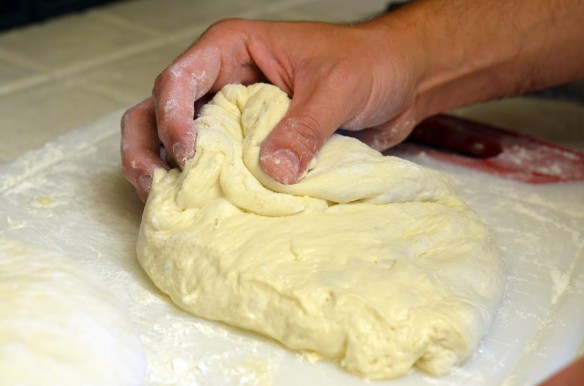
The recipe makes two loaves, so we ate the first practically fresh from the oven with gorgonzola fondue and saved the second loaf for the next day. While not quite as good, it was still some of the best bread I've tasted, even on day 2.
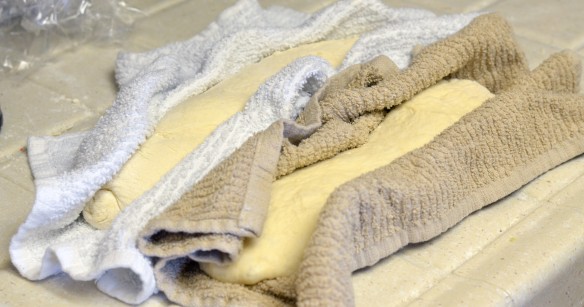
Bouchon Bâtards
yields 2 loaves
Poolish
- 146 grams (1 cup + 1/4 teaspoon) all-purpose flour
- .1 gram (1/32 teaspoon) instant yeast
- 146 grams (1/2 cup + 1 tablespoon + 2 1/2 teaspoons) water at 75º
- Combine the flour and yeast in a medium sized bowl.
- Pour in water and mix until the batter is mixed to the consistency of pancake batter.
- Cover loosely with plastic and let sit at room temperature for 12-15 hours.
Dough
- 437 grams (3 cups + 2 tablespoons) all-purpose flour
- .9 gram (1/4 teaspoon) instant yeast
- 279 grams (1 cup + 3 1/2 tablespoons) water at 75°
- 12 grams (2 teaspoons) sea salt
- Spray a large bowl with non-stick spray.
- Combine the flour and yeast in the bowl of a stand mixer.
- Pour half of the water around the poolish to loosen it from the bowl.
- Add the poolish and water to the flour and mix on low speed for 3 minutes, ensuring all of the flour is incorporated.
- Sprinkle the salt over the dough and mix on low speed for 20 minutes. The dough will still be very sticky at this point.
- Place the dough on a lightly floured surface and form into a rectangular shape, patting out any air bubbles.
- Stretch the left side of the dough and fold it over 2/3 of the dough as if folding a letter. Repeat this step folding the right side of the dough, the top of the dough, followed by the bottom.
- Place the dough, seam side down back in the bowl. A pastry cutter is super helpful here in moving the dough around.
- Cover the bowl with plastic wrap, and set a timer for an hour.
- After one hour, shape, stretch, and fold the dough as before. It should be less sticky. Set the timer for an hour again and repeat once more (you will have done this three times).
- Divide the dough into 2 equally sized pieces and shape into rectangles.
- Gently fold each piece of dough into the center to form a ball and turn seam side down. Let rest for 15 minutes.
- To shape the dough, turn the dough seam-side up. Lift the bottom of the dough and fold it over 2/3 of the dough then repeat with top of the dough.
- Create an indentation in the dough, then fold the dough, so the top and bottom edges meet. Then seal the seam, and flip over. Lightly press the dough, starting in the middle and pressing out while rolling the dough. The diameter of the batard should be around 2 3/4 inches.
- Lay each loaf on a linen towel and fold edges of towel up around the dough. Cover with plastic tub for an hour.
- Preheat a baking stone in the oven at 460º.
- Transfer the loaves to a peel (seam side down) then score the dough down the middle.
- Transfer the loaves to the heated baking stone and bake for approximately 25 minutes.
- Allow the bread to cool completely on a baking rack (it will continue cooking), then enjoy at room temperature or reheat in the oven.




